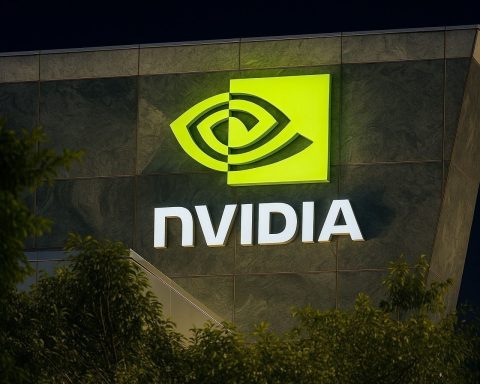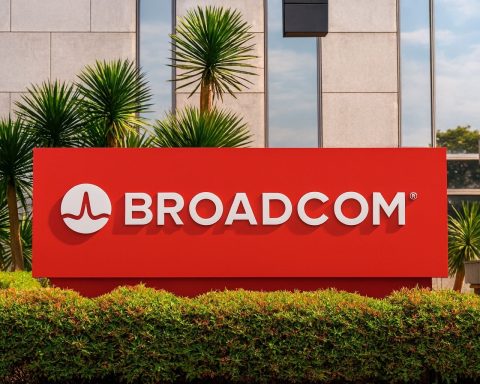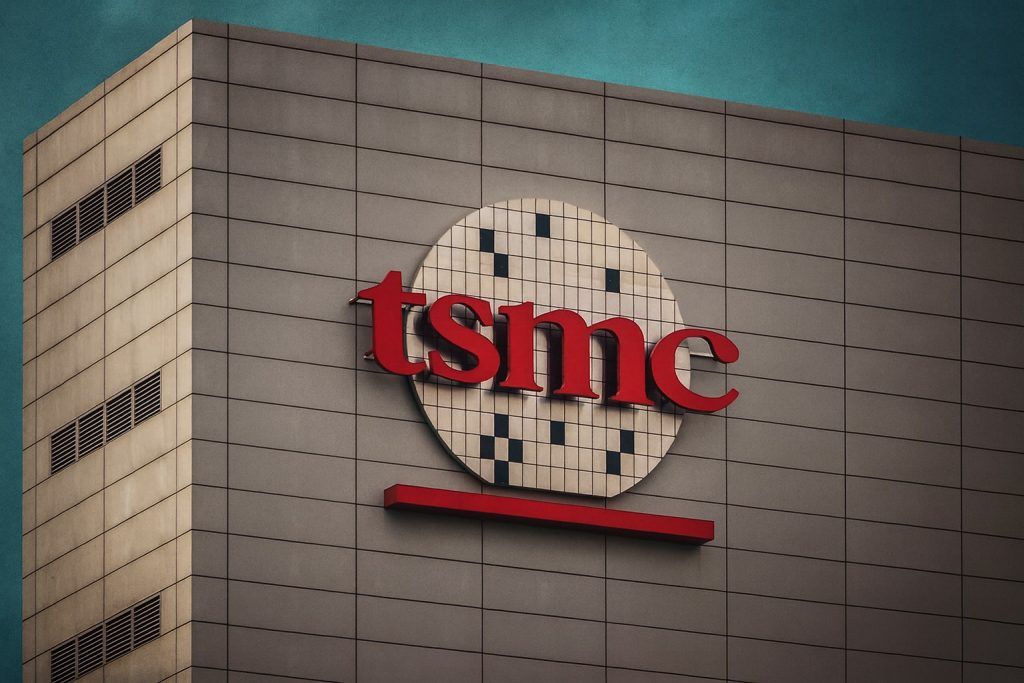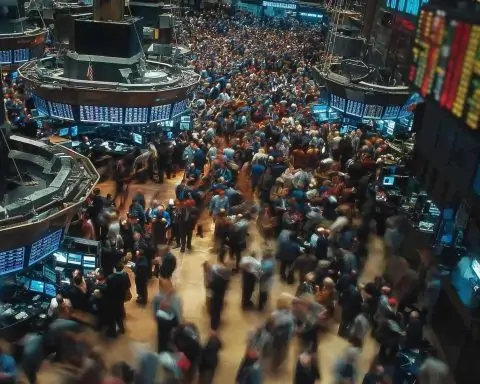- Rare Earth Pioneer: USA Rare Earth, Inc. (NASDAQ: USAR) is building a fully domestic “mine-to-magnet” supply chain for critical rare earth elements. The company controls the Round Top rare-earth deposit in Texas and is constructing a neodymium-iron-boron (NdFeB) magnet plant in Oklahoma [1] – aiming to supply magnets for EVs, wind turbines, defense systems and more, thereby reducing U.S. reliance on China.
- Spectacular 2025 Rally: USAR stock has skyrocketed this year – up well over +120% year-to-date, recently hitting all-time highs in the low-$30s per share [2]. That’s a five-fold surge from its ~$6 lows earlier in 2025. The market now values USAR around $2.6–3.0 billion in market cap [3], despite the company being pre-revenue.
- White House Buzz: A major catalyst was new CEO Barbara Humpton (ex-Siemens USA chief) revealing on Oct 3 that USAR is in “close communication with the administration” in Washington [4]. This stoked speculation of federal support – sparking a one-day stock jump of ~18–20% to record highs [5]. Investors are betting that government backing (like recent U.S. stakes in lithium and rare earth firms) could de-risk USAR’s projects.
- Strategic Acquisition: In late September, USAR announced a $100 million deal to acquire UK-based Less Common Metals (LCM) – one of the only non-Chinese producers of rare-earth magnet alloys [6]. The acquisition fast-tracks USAR’s vertical integration by giving it immediate rare-earth metal processing capabilities. The news was cheered by the market (USAR stock popped ~30% on the announcement) [7], as it fills a critical midstream supply chain gap.
- Financials & Funding: USAR is still in development stage with no revenue yet. It reported a Q2 2025 net loss around $142 million (largely due to one-time SPAC merger costs) and an operating loss of ~$8–9 million [8]. As of mid-2025 it held about $120+ million in cash and no debt [9], though a big chunk was earmarked for the LCM deal. Analysts expect USAR will need additional funding or government grants to finance its mine and plant buildout [10]. Notably, the company filed to register 8.33 million shares for sale by early investors in October [11], hinting at increased public float (and some shareholder profit-taking).
- Analyst Sentiment: Wall Street views USAR as a strategically important play and several analysts initiated coverage with “Buy” ratings in 2025 [12]. However, their 12-month price targets (mostly in the $15–$22range) significantly lag the stock’s ~$30+ trading price after the recent parabolic rally [13]. At least one independent research firm has urged caution with a “Sell” rating, arguing that hype has outpaced fundamentals [14]. The consensus is that USAR’s long-term potential is huge, but execution risks remain high.
Company Background & Operations
USA Rare Earth, Inc. is a U.S.-based critical minerals company focused on establishing a fully domestic rare-earth supply chain – from mining raw ore to producing finished rare-earth magnets. Its flagship asset is the Round Top Mountain deposit in Texas, which contains a broad spectrum of rare earth elements (including heavy rare earths like dysprosium and terbium) [15]. Through a joint venture with Texas Mineral Resources Corp., USAR controls Round Top and is developing it as a secure source of raw materials for its magnet production plans [16].
On the downstream side, USAR is building a neodymium-iron-boron (NdFeB) permanent magnet manufacturing facility in Stillwater, Oklahoma [17]. Once operational (expected ~2026), this plant will make high-performance magnets used in electric vehicle motors, wind turbines, defense systems, and other tech applications [18]. USAR’s strategy is often described as “mine-to-magnet” vertical integration – controlling the entire value chain from ore to finished magnet. By doing so, the company aims to create a domestic supply chain independent of Chinese materials [19]. This is strategic, as China currently produces >90% of the world’s refined rare earths and magnets, while the U.S. today has only one operating rare earth mine and no commercial-scale magnet manufacturing [20] [21].
A recent transformative step for USAR’s operations was its acquisition of Less Common Metals (LCM), a UK-based rare-earth alloy producer. LCM is one of the only facilities outside China capable of processing both light and heavy rare earths into the specialized alloys needed for magnets [22] [23]. By bringing LCM’s expertise in-house, USAR gains ready-made midstream capability – for example, LCM produces neodymium-praseodymium (NdPr) alloy for NdFeB magnets and samarium-cobalt alloy for high-temperature magnets [24]. USAR plans to integrate LCM’s technology into the Oklahoma magnet plant and eventually replicate such metal-processing on U.S. soil [25]. In 2025, USAR even demonstrated a lab-scale milestone by producing >99% pure dysprosium oxide from Round Top ore [26], proving it can extract valuable heavy rare earths domestically.
In summary, USAR’s operations span upstream mining (Round Top resource), midstream refining/alloy production(via LCM’s know-how), and downstream manufacturing (the magnet plant). This vertical model positions USAR as a potential first mover in resurrecting a U.S.-based rare earth industry that can supply manufacturers without reliance on China [27]. As TS2.tech notes, if successful, USAR would create “the first and only true mine-to-magnet supply chain in the West,” offering a one-stop domestic source for critical magnet materials [28] [29].
Public Listing and Stock Performance
USA Rare Earth went public in March 2025 via a merger with a SPAC (special-purpose acquisition company) called Inflection Point Acquisition Corp. II. The SPAC deal, completed March 13, 2025, injected roughly $50 million new capital and valued USAR around ~$870 million enterprise value at closing [30] [31]. Upon its Nasdaq debut under ticker “USAR”, the stock traded near the typical SPAC baseline of ~$10 in early 2025 [32].
For its first few months, USAR stock traded quietly and even dipped into the mid-single digits by mid-2025. However, in the second half of 2025 investor enthusiasm exploded, fueled by a series of positive developments (detailed in the next section). The stock price rocketed from around $5–6 in the summer to above $30 by early October [33]. In the first week of October alone, USAR shares surged past $30, with an intraday peak above $32 on Oct 9 [34]. This rally represents roughly a 5× increase year-to-date. Just one week earlier (late September) the stock was in the high teens – underscoring the speed of the spike [35].
As of October 9, 2025, USAR closed in the low-$30s per share [36], equating to a market capitalization around $2.5–3 billion depending on share count [37]. (For context, its SPAC merger valued it under $1 billion just six months prior.) The stock’s momentum has been accompanied by huge trading volumes – tens of millions of shares traded per day during the October run-up [38]. This suggests heavy interest from retail traders and momentum investors riding the rare-earth news cycle.
Volatility is high. The stock routinely sees double-digit percentage swings on news. For example, during the week of Oct 2–9: USAR jumped +23% in one day on Oct 2 (from ~$18.41 to $22.71) [39] after bullish news hit, then leapt another +14% on Oct 3 to around $25.96 [40]. It pushed as high as $30.92 intraday on Oct 7 [41], before a brief pullback and then a further +12% surge on Oct 9. Such swings reflect that USAR trades more on news and future potential than on fundamentals at this stage. Traders have been quick to bid the stock up on any hint of good news (and could just as quickly sell on disappointments).
At current levels, investor expectations are sky-high. USA Rare Earth’s valuation implies the market is pricing in successful execution of its mine-to-magnet vision and perhaps some form of government support. The company now has a sizable public float for its size (with early investors registering ~8.33M shares for possible sale [42], expanding the tradable float). USAR’s first earnings report as a public company (likely for Q3 2025 in November) will be closely watched, although meaningful revenue is only expected once production starts (targeted 2026). In short, USAR has quickly become one of 2025’s hottest stocks, reflecting both rare-earth supply chain optimism and significant speculative fervor.
Recent News and Catalysts (Sept – Oct 2025)
The past few weeks have been exceptionally eventful for USA Rare Earth, with several major developments turbocharging the stock:
- New CEO Appointment (Sept 29, 2025): USAR announced that Barbara Humpton would become CEO, effective Oct 1 [43]. Humpton is a high-profile hire – she was previously CEO of Siemens USA – and her appointment was seen as gearing up USAR for its next growth phase. She replaced co-founder Josh Ballard. Beyond her operational experience, Humpton’s connections in Washington, D.C. and industry were noted as big assets. Indeed, investors took her hiring as a bullish signal that USAR would cultivate strong federal relationships and possibly navigate regulatory and funding channels more effectively [44]. This anticipation proved prescient when Humpton soon after made headlines with comments about White House outreach.
- Less Common Metals Acquisition (announced Sept 26, 2025): In late September, USAR unveiled a “transformative” deal to acquire Less Common Metals (LCM) of the U.K. for $100 million in cash plus ~6.74 million USAR shares [45] [46]. LCM is renowned as one of the only facilities outside China that can produce both light and heavy rare-earth magnet alloys at scale [47]. USAR’s management touted the acquisition as bold and instantly giving the company capabilities that would have otherwise taken years to build [48]. At the time of announcement, USAR’s stock was around $18–19, so the stock portion implied a total deal value near $220 million [49]. Investors loved the move – USAR shares jumped roughly +30% in the days after [50]. By acquiring LCM, USA Rare Earth gains a ready-made supply of critical magnet alloys and processing tech. The deal was widely seen as accelerating USAR’s vertical integration plans and shoring up the “missing middle” of its supply chain. (Notably, LCM also has existing operations in the UK and plans for a new plant in France [51], which could give USAR a footprint in the European market as well.) This acquisition news set the stage for the stock’s rally in late September.
- White House & Government Buzz (early Oct 2025): The biggest catalyst came in early October when it emerged that USAR was engaging with the U.S. government at high levels. On Oct 3, new CEO Barbara Humpton told CNBC “we are in close communication with the administration” regarding USA Rare Earth [52]. This seemingly offhand remark ignited a frenzy of speculation on Wall Street. Investors interpreted it as a hint that USAR might be in line for some form of federal support or partnership, especially given recent precedent. Within hours of Humpton’s comment, USAR’s stock soared ~18–20% intraday, hitting a new record high [53]. A Reuters report that day noted Wall Street was “salivating” at the prospect that USAR could be “next in line” for a government deal [54], akin to those struck with other critical-minerals firms.Context: In 2025 the U.S. government has stepped in directly to back key mineral projects. Just days before Humpton’s comment, the U.S. Department of Energy took a 5% equity stake in Lithium Americas (a lithium miner), and in July the Pentagon acquired a 15% stake in MP Materials (the leading U.S. rare-earth miner) [55]. Those moves sent those stocks soaring. The mere possibility that USA Rare Earth could be “the next government-backed player” lit a fire under USAR’s share price [56]. “We don’t know what form a potential U.S. government investment can take, but there’s still a missing piece to the mines-to-magnet strategy,”said Subash Chandra, an analyst at The Benchmark Company, highlighting that a federal infusion could fill a critical funding gap [57] [58]. As one market commentator put it, hope of a U.S. deal “lit jet fuel”under USAR’s stock [59]. However, it must be noted that no official agreement has been announced as of Oct 10 – the rally is based on expectations and rumor. USA Rare Earth declined to comment on the speculation and White House officials have not confirmed any plans [60]. This uncertainty means the stock could pull back if nothing materializes. Still, the narrative of potential federal support has firmly taken hold in USAR’s story.
- China’s Rare Earth Export Curbs (Oct 9, 2025): Geopolitics provided another boost. On Oct 9, Beijing tightened export controls on rare earth metals, adding new elements to its restrictions and imposing extra licensing requirements ahead of a Trump–Xi summit [61]. China’s move explicitly aimed to limit exports to foreign defense and semiconductor companies [62]. This news sent the entire rare-earth sector climbing. U.S. rare earth stocks – including MP Materials, NioCorp, and USA Rare Earth – all jumped on Oct 9 as investors anticipated that stricter Chinese curbs would increase demand for non-Chinese suppliers [63]. USAR’s shares got an extra +4–5% lift initially (and ended +12% by that day’s close) [64]. “The message is clear: If the U.S. and its allies want supply chain security, they must build independent value chains from mine to magnet,” said Benchmark Mineral Intelligence analyst Neha Mukherjee, reacting to China’s move [65] [66]. Every time China rattles its saber with export limits, it reinforces the U.S. resolve to develop domestic rare earth capabilities – a dynamic that favors companies like USAR in the long run. Indeed, the White House responded that it was assessing the new Chinese rules, which were “announced without notice” in an effort to control global tech supply chains [67]. Washington and its allies are racing to build their own rare earth supply chains [68], and China’s actions only add urgency to efforts that could benefit USAR.
- Other Notables: Over the summer, USAR had quietly achieved some technical milestones and was on the government’s radar even before these headlines. In July 2025, USAR participated in a White House roundtable on critical minerals [69], signaling it has been in policy discussions. And in mid-2025, the company produced its first test batch of rare earth magnets at its Oklahoma lab facility [70] – actually demonstrating end-to-end capability (from mining a rare earth oxide to manufacturing a magnet). Such progress lends credibility to USAR’s ambitious plans, even if it was overshadowed by the splashier news in recent weeks.
In sum, recent news around USAR has been overwhelmingly positive. A high-profile leadership change, a game-changing acquisition, signs of U.S. government interest, and favorable geopolitical tailwinds all converged at once. These events validated key aspects of USA Rare Earth’s strategy – underscoring the importance of a non-Chinese supply chain – and propelled the stock to new heights.
Industry Positioning and Competitors
USA Rare Earth is positioning itself as a strategic player in the rare earth industry – specifically, a vertically integrated American supplier of rare-earth magnets. In a sector long dominated by China, USAR’s emergence comes at a critical time. The U.S. government has identified rare earth supply chains as a national security priority, which creates a supportive backdrop for companies like USAR. Unlike traditional mining firms that focus only on extraction, USAR’s model is to capture value at each stage: mining, refining, alloying, and manufacturing finished magnet products. This could make USAR a one-stop domestic solution for customers (e.g. defense contractors, EV makers) seeking a secure, non-Chinese source of rare earth magnets [71]. “Any reshoring strategy should include them,” said Benchmark analyst Subash Chandra about USAR, noting it as one of the more significant emerging U.S. neo-magnet manufacturers [72].
Key assets and advantages: USAR’s Round Top deposit is a large and uniquely rich resource – containing 15 of the 17 rare earth elements (including both “light” and “heavy” REEs) in addition to lithium and other critical minerals [73]. This contrasts with the Mountain Pass mine (operated by rival MP Materials) which primarily yields light rare earths (like neodymium/praseodymium). Round Top’s diverse REE mix, especially valuable heavy elements like dysprosium and terbium, could give USAR an edge in supplying the full spectrum of magnet materials [74]. Furthermore, by acquiring LCM, USAR gained proven technology for turning those rare earth oxides into high-grade metals and alloys – a midstream capability no other Western company fully possesses at scale [75] [76]. USAR’s chairman even touted that the LCM deal creates “the first and only true mine-to-magnet supply chain in the West” [77]. This vertical integration could provide cost advantages and supply security that set USAR apart from peers.
Competitive landscape: The company’s primary U.S. competitor is MP Materials (NYSE: MP), which operates the only active U.S. rare earth mine (Mountain Pass, California). MP is further along in production (it produces REE concentrates today) and, like USAR, is moving downstream – MP has a contract with the Pentagon and is building its own magnet factory in Texas [78] [79]. In July 2025, the U.S. Department of Defense took a direct equity stake in MP Materials, becoming its largest shareholder, as part of a multi-billion dollar deal to boost domestic magnet output [80] [81]. That government backing underscores MP’s importance, but also signals how strategic this industry is. Another notable player is Australia’s Lynas Rare Earths (ASX: LYC), currently the world’s largest rare earth producer outside China. Lynas operates a rich mine in Australia and processing facilities in Malaysia, and it too has received U.S. Defense Department contracts (for a heavy REE separation plant in Texas). Ucore Rare Metals (TSXV: UCU) and NioCorp (NASDAQ: NB) are smaller developers attempting to establish rare earth processing in North America, but they are earlier-stage. In Europe, Neo Performance Materials (TOR: NEO) processes rare earths for magnets and is sometimes cited as a peer. However, no Western company has a fully integrated mine-to-magnet pipeline yet – which is exactly what USAR is striving to achieve first.
USAR is also leveraging partnerships: its joint venture with Texas Mineral Resources provides mining expertise and local support in Texas. The company could seek further alliances, for example with end-users (motor manufacturers or defense contractors) who might co-invest or sign offtake agreements to secure magnet supply. Given the geopolitical impetus, government partnerships are arguably the most crucial. If USAR can secure federal grants, loans, or offtake contracts (for example, supplying magnets to the U.S. military or EV programs), it would markedly strengthen its competitive position versus peers. Essentially, USA Rare Earth’s value proposition lies in offering a home-grown alternative to China’s dominance. As a Reuters piece succinctly noted: China produces over 90% of the world’s processed rare earths and magnets, while the U.S. has only one rare-earth mine [82]. Bridging that gap will “take a lot of players to build out this marketplace,” USAR’s CEO Humpton said [83], implying multiple companies (USAR, MP, Lynas, etc.) will be needed to collectively challenge China’s monopoly.
Financial Health and Outlook
As of 2025, USA Rare Earth is in a pre-revenue, heavy investment phase. The company is still constructing its facilities and has not yet begun commercial production (the Oklahoma magnet plant is slated to start output in 2026, and the Round Top mine would follow). Consequently, current financials show losses and cash burn rather than revenue:
- Recent earnings: In Q2 2025, USAR (which had just gone public via SPAC) reported an adjusted net loss of about $0.08 per share, missing analyst forecasts [84]. In dollar terms, this was roughly a $142.5 million net lossfor the quarter [85] – though the vast majority of that was attributed to one-time transaction costs from the SPAC merger. Stripping those out, the operating loss was around $8.8 million for Q2 [86], reflecting ongoing R&D and development expenses. There were no meaningful revenues yet to offset costs.
- Cash and funding: USAR had roughly $128 million in cash on hand as of mid-2025 [87] (including $22M raised from warrant exercises) and essentially no debt [88]. This cash is being used to build the Oklahoma magnet plant and advance Round Top’s development. However, a significant portion was just committed to the $100M cash acquisition of LCM (which presumably closed in Q4 2025). This likely leaves the company with a much thinner cash cushion going into 2026. Analysts widely expect USAR will need to raise additional capital to fully fund its projects [89]. Potential sources include equity or debt raises, strategic partnerships, or government grants/loans (if forthcoming). The good news is that the U.S. government has shown a willingness to fund critical minerals projects (as noted with Lithium Americas and MP Materials stakes). USAR could be a candidate for such support, which might come in the form of a grant or direct investment to help finance its mine or processing facilities.
- Share offering: In early October, USAR filed a registration for up to 8,333,333 shares to be sold by certain existing stockholders [90]. This suggests some early investors (likely SPAC sponsors or pre-merger shareholders) may take profits by selling shares on the open market. While this secondary offering doesn’t raise new money for the company (since proceeds go to selling holders), it will increase the public float and liquidity. It also potentially adds slight near-term stock price pressure as those shares hit the market. Nonetheless, strong demand for the stock has so far outweighed any dilution concerns – in fact, the stock rose even after the share offering news, as it was coincident with the White House buzz.
- Burn rate and expenses: Building a mine and a magnet plant from scratch is capital intensive. USAR’s cash burn includes constructing facilities, permitting and environmental work in Texas, R&D on processing technology, and general corporate overhead. Capital expenditures will continue to be high through 2026. Investors will be monitoring how efficiently USAR deploys its cash and whether it secures outside funding to avoid over-reliance on dilutive stock issuance. Any delays or cost overruns in the project timelines (for Round Top or the magnet plant) could necessitate larger capital raises.
Looking ahead, USA Rare Earth’s investment case hinges on it transitioning from development to production over the next 1–2 years. The company has guided that its Stillwater magnet plant should start pilot production by 2026 [91], with an initial capacity (reportedly ~1,200 tonnes per year of magnets) and plans to scale up further [92]. Achieving that on schedule would likely unlock first revenues and prove the concept. The Round Top mine, being a greenfield project, may take longer (feasibility and construction could push first mining into 2027+ unless fast-tracked). In the interim, acquiring LCM means USAR could potentially generate some revenue by 2025–2026 from LCM’s existing operations (LCM sells rare-earth alloys, presumably with current annual revenues, though relatively small). It’s also possible USAR will expand LCM’s capacity to serve customers in Europe and the U.S. even before Round Top comes online.
Bottom line: financially, USAR is high-risk, high-reward. It doesn’t yet earn money and will likely run losses for the next couple of years while building its supply chain. This makes the stock’s current multi-billion valuation somewhat speculative – investors are valuing the future potential rather than present fundamentals. However, the strategic importance of what USAR is trying to do means it may attract non-market support (government funds, etc.) that mitigates some financial risk. Any news of grants, loans or major customer contracts could dramatically improve the outlook. Conversely, if funding becomes challenging (e.g. if capital markets tighten or government support doesn’t materialize), USAR might have to issue more shares or slow its plans, which would weigh on the stock. Potential investors should be prepared for volatility and a need for patience as the company executes its roadmap.
Analyst Opinions and Stock Potential
Wall Street analysts have generally come out bullish on USA Rare Earth’s long-term prospects, albeit with some caution on valuation. Several banks and research firms initiated coverage of USAR in 2025 with “Buy” or “Overweight” ratings, citing the company’s unique positioning in a strategic industry [93]. Analysts at Benchmark, Roth Capital, Canaccord and others have applauded USAR’s vertical integration strategy and the tailwinds from U.S. policy. “USA Rare Earth is one of the more significant emerging U.S. neo magnet manufacturers and any reshoring strategy should include them,” said Benchmark’s Subash Chandra [94], highlighting how critical USAR could be to securing domestic supply chains.
However, many of the initial price targets set by analysts now appear conservative relative to the stock’s meteoric rise. For example, Roth Capital maintained a $20 price target even after the LCM acquisition, noting the deal solidifies USAR’s midstream and supports its 2026 production timeline [95]. Canaccord Genuity reportedly has a target in the low-$20s as well. These targets were set when the stock was much lower, and implied substantial upside at the time, but USAR has since overshot them – trading in the $30s by October. This disconnect suggests either the stock has run ahead of fundamentals or analysts will be revising their targets upward if they remain positive on the story. Indeed, one catalyst for the continued rally on Oct 10 was a report that Roth Capital doubled its price target, which helped fuel another stock jump [96]. Even so, current share prices arguably bake in a lot of good news already.
Importantly, not everyone is unreservedly bullish. At least one independent research firm or blogger has issued a “Sell” or cautious rating, arguing that the hype and speculation around government deals have led to overvaluation [97]. They point out that USAR is still essentially a startup with enormous execution risk: it must build complex facilities on time and on budget, and there is no guarantee of profitable operations. Simply Wall St, which models valuations, noted that while some projections show huge future cash flows, the company only scores 2/6 on certain value metrics and has plenty of “warning signs” (e.g. ongoing losses, shareholder dilution) as of now [98]. In forums and investor circles, some have raised skepticism – one commentator quipped that rare-earth refining isn’t magic but “a function of dumping capital” into a tough business, cautioning that USAR remains highly speculative [99].
Expert commentary also emphasizes the broader picture. The rare earth magnet market is expected to grow significantly with the EV and renewable energy boom, which is a key reason to be excited about USAR. But experts also stress diversification: “This is a field where it will not be a zero-sum game… It’s going to take a lot of players to build out this marketplace,” CEO Barbara Humpton noted [100], implying USAR will be one of several winners rather than monopolizing the space. Neha Mukherjee of Benchmark Mineral Intelligence sees the current moment as a “window of opportunity for emerging producers and processors outside China to position themselves as credible alternatives”, given geopolitical drivers [101]. That bodes well for USAR if it can execute. At the same time, seasoned analysts remind investors that patience is key: building a mining and processing operation can encounter delays, and revenues will not ramp up overnight.
Market outlook: In the near term, USAR’s stock will likely continue to trade on news flow and sentiment. Any announcement of a concrete government investment or contract (or faster-than-expected project progress) could propel shares even higher. Conversely, absence of news or any hiccup (regulatory hurdles, construction delays, etc.) could trigger a sharp pullback from these elevated levels. The rare earth sector’s volatility is also tied to international politics – for instance, improved U.S.-China trade relations could temporarily cool the “strategic urgency” premium on stocks like USAR, whereas further Chinese export clampdowns or U.S. legislation boosting domestic sourcing would heat it up again.
Most long-term forecasts see substantial demand for rare earth magnets and a necessary shift of supply chains out of China. If USA Rare Earth hits its milestones, it could capture a solid slice of a burgeoning market (some estimates value the global rare earth magnet market at tens of billions of dollars by late 2020s). Optimistic projections even imagine USAR expanding beyond its initial plant to multiple facilities, supplying both U.S. and allied markets. On the other hand, execution missteps or lower-than-expected efficiency could limit its competitiveness against entrenched Chinese producers or against rivals like MP Materials (which already has larger funding and a big head start).
Investor advice: Experts generally advise that those interested in USAR stock should keep a long time horizon and be prepared for roller-coaster volatility. “USA Rare Earth remains a speculative stock. Re-examine your risk tolerance before buying,” one analyst cautioned [102]. The company’s success is not guaranteed, but its mission is of national importance – which is a rare quality for a startup. That dual nature (high risk, high importance) makes USAR one of the market’s most intriguing stories.
Conclusion
USA Rare Earth has swiftly moved from obscurity to the center of the rare-earth conversation in 2025. The company’s bold “mine-to-magnet” vision, timely strategic moves, and favorable macro winds (from Washington’s support to Beijing’s restrictions) have created a perfect storm driving its stock to record heights. For investors and industry watchers alike, USAR represents both the promise and the challenges of rebuilding a critical supply chain on American soil. There is real momentum behind the effort – a new CEO with political connections, an accretive acquisition, and active discussions about government backing show that USAR is aligning its pieces.
Yet, significant hurdles remain: the company must prove it can turn plans into production, manage its finances, and compete globally. The next 12-24 months will be crucial in determining whether USA Rare Earth becomes a cornerstone of a new domestic rare earth industry or whether enthusiasm gets ahead of reality. In the meantime, the stock’s wild ride is likely to continue. For now, USA Rare Earth has captured investors’ imaginations as a potential game-changer in an industry long dominated by China – and its journey will be closely watched as a bellwether for America’s broader push to secure critical mineral supply chains.
Sources: Key information and quotes were drawn from TS2.tech financial news analysis [103] [104] [105] [106] [107] [108], official statements and filings [109] [110], Reuters reporting on market-moving developments [111] [112], and expert commentary from industry analysts and company officials [113] [114]. These sources provide a comprehensive view of USA Rare Earth’s current status, opportunities, and risks as of October 10, 2025.
References
1. ts2.tech, 2. ts2.tech, 3. ts2.tech, 4. ts2.tech, 5. ts2.tech, 6. ts2.tech, 7. ts2.tech, 8. ts2.tech, 9. ts2.tech, 10. ts2.tech, 11. www.investing.com, 12. ts2.tech, 13. ts2.tech, 14. ts2.tech, 15. ts2.tech, 16. ts2.tech, 17. ts2.tech, 18. ts2.tech, 19. ts2.tech, 20. ts2.tech, 21. ts2.tech, 22. ts2.tech, 23. ts2.tech, 24. ts2.tech, 25. ts2.tech, 26. ts2.tech, 27. ts2.tech, 28. ts2.tech, 29. ts2.tech, 30. ts2.tech, 31. ts2.tech, 32. ts2.tech, 33. ts2.tech, 34. ts2.tech, 35. ts2.tech, 36. ts2.tech, 37. ts2.tech, 38. ts2.tech, 39. ts2.tech, 40. ts2.tech, 41. ts2.tech, 42. www.investing.com, 43. ts2.tech, 44. ts2.tech, 45. ts2.tech, 46. ts2.tech, 47. ts2.tech, 48. ts2.tech, 49. ts2.tech, 50. ts2.tech, 51. ts2.tech, 52. ts2.tech, 53. ts2.tech, 54. ts2.tech, 55. ts2.tech, 56. ts2.tech, 57. www.reuters.com, 58. www.reuters.com, 59. ts2.tech, 60. ts2.tech, 61. ts2.tech, 62. ts2.tech, 63. ts2.tech, 64. ts2.tech, 65. ts2.tech, 66. kfgo.com, 67. www.reuters.com, 68. www.reuters.com, 69. ts2.tech, 70. ts2.tech, 71. ts2.tech, 72. www.reuters.com, 73. www.investing.com, 74. www.investing.com, 75. ts2.tech, 76. ts2.tech, 77. ts2.tech, 78. www.reuters.com, 79. www.reuters.com, 80. www.reuters.com, 81. www.reuters.com, 82. kfgo.com, 83. www.tipranks.com, 84. www.investing.com, 85. ts2.tech, 86. ts2.tech, 87. www.investing.com, 88. ts2.tech, 89. ts2.tech, 90. www.investing.com, 91. www.tipranks.com, 92. ts2.tech, 93. ts2.tech, 94. www.reuters.com, 95. www.tipranks.com, 96. www.fool.com, 97. ts2.tech, 98. simplywall.st, 99. www.reddit.com, 100. www.tipranks.com, 101. kfgo.com, 102. www.mitrade.com, 103. ts2.tech, 104. ts2.tech, 105. ts2.tech, 106. ts2.tech, 107. ts2.tech, 108. ts2.tech, 109. www.investing.com, 110. ts2.tech, 111. www.reuters.com, 112. kfgo.com, 113. www.tipranks.com, 114. ts2.tech










